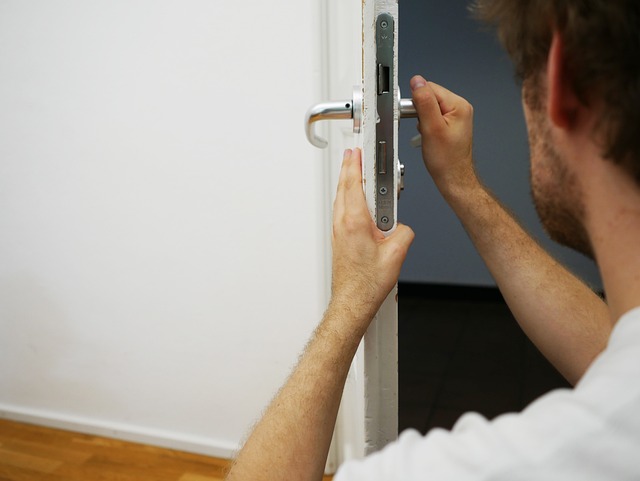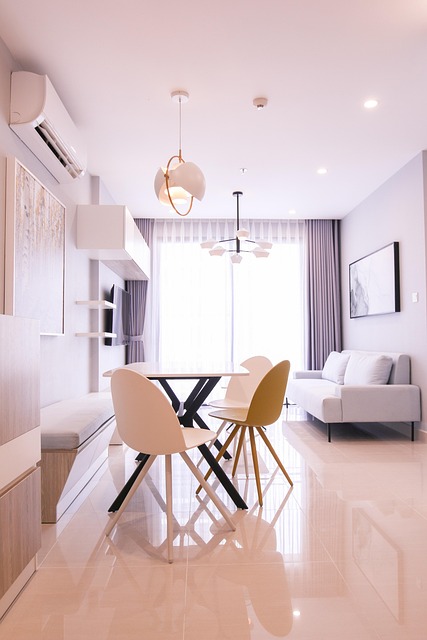Before creating a portable DIY alarm system for your apartment, assess its size and potential entry points, and consider your lifestyle and pets' habits. Choose components accordingly, such as motion sensors, amplifiers, power sources (e.g., batteries or USB banks), control circuits (like Arduino or Raspberry Pi), and optional GSM modules for smartphone notifications. Kits provide clear instructions and all necessary components for strategic sensor placement at entry points, windows, or walls. Regularly test and maintain the system, including monthly checks of sensors, detectors, and alarms, to ensure reliability. Educate occupants about response procedures during alarm activation.
Strengthen the security of your apartment with simple, effective portable DIY alarm systems. This guide equips you to quickly enhance your home’s defense. From understanding your security needs to gathering essential materials and testing your system, we cover everything. Learn how to create a reliable alarm that provides peace of mind without breaking the bank. Implement these steps for immediate and affordable apartment protection.
- Understanding Your Apartment Security Needs
- Gathering Materials for a Portable DIY Alarm System
- Assembly and Installation of the Alarm System
- Testing and Maintenance Tips for Effective Protection
Understanding Your Apartment Security Needs

Before setting out to create a DIY alarm system, it’s crucial to understand your apartment’s specific security needs. Every space is unique, with varying levels of vulnerability and potential entry points. For example, a studio apartment might require a simple, portable DIY alarm system focused on detecting unexpected movements or open doors/windows, while a larger unit could benefit from a more comprehensive setup addressing not just motion but also glass-break sensors and key fobs for remote disarming.
Consider your lifestyle too—how often are you home? Do you have pets that might trigger false alarms? Understanding these factors will guide your choice of alarm components, ensuring an effective system tailored to your needs without unnecessary bells and whistles.
Gathering Materials for a Portable DIY Alarm System

Creating a portable DIY alarm system is an accessible and effective way to enhance apartment security quickly. To get started, gather essential materials like a motion sensor (ideally a passive infrared sensor for detecting heat signatures), a small amplifier or speaker, a power source (such as batteries or a USB power bank), and a control circuit (a simple microcontroller like Arduino or Raspberry Pi can do the trick). Additionally, consider including a phone notification feature by integrating a GSM module to send alerts directly to your smartphone. These components combine to form a comprehensive portable DIY alarm system that offers both audible warnings and remote monitoring capabilities, ensuring you stay connected to your apartment’s safety at all times.
Assembly and Installation of the Alarm System

The assembly process for a portable DIY alarm system is surprisingly straightforward and often involves simple step-by-step instructions provided with the kit. These kits typically include all necessary components—from motion sensors to control panels and siren units—allowing users to connect them according to their specific layout and needs. Most systems are modular, making installation flexible and adaptable for various apartment configurations. Once assembled, these portable alarms can be strategically placed at entry points, windows, or along walls to create a comprehensive security network.
During installation, ensure that each sensor is positioned correctly to detect any unauthorized access attempts. Many DIY alarm kits offer wireless connectivity, allowing users to install sensors remotely and even control the system via a smartphone app. With these portable solutions, you can easily monitor your apartment’s perimeter, ensuring peace of mind without complex wiring or professional installation.
Testing and Maintenance Tips for Effective Protection

Regular testing and maintenance are crucial for ensuring your portable DIY alarm system remains effective in providing quick apartment protection. Set a schedule to test all sensors, detectors, and alarms at least once a month. This helps identify any issues or weak points in your security setup before they become problematic. For example, check battery life, ensure all motion sensors have clear lines of sight, and verify that sound alerts are audible throughout your apartment.
Proper maintenance includes keeping the system clean and free from debris, dust, or pet hair, which can interfere with sensor function. Update firmware when prompted by the manufacturer to incorporate the latest security enhancements. Additionally, educate yourself and other occupants about how to respond during an alarm activation, ensuring everyone knows the difference between a false alert and an actual security breach.
Protecting your apartment doesn’t have to be complex or expensive. By harnessing the power of portable DIY alarm systems, you can quickly enhance your security and peace of mind. With a few simple tools and materials, these do-it-yourself solutions offer effective protection without breaking the bank. Remember, an informed and proactive approach to your apartment’s security is always a wise choice.
